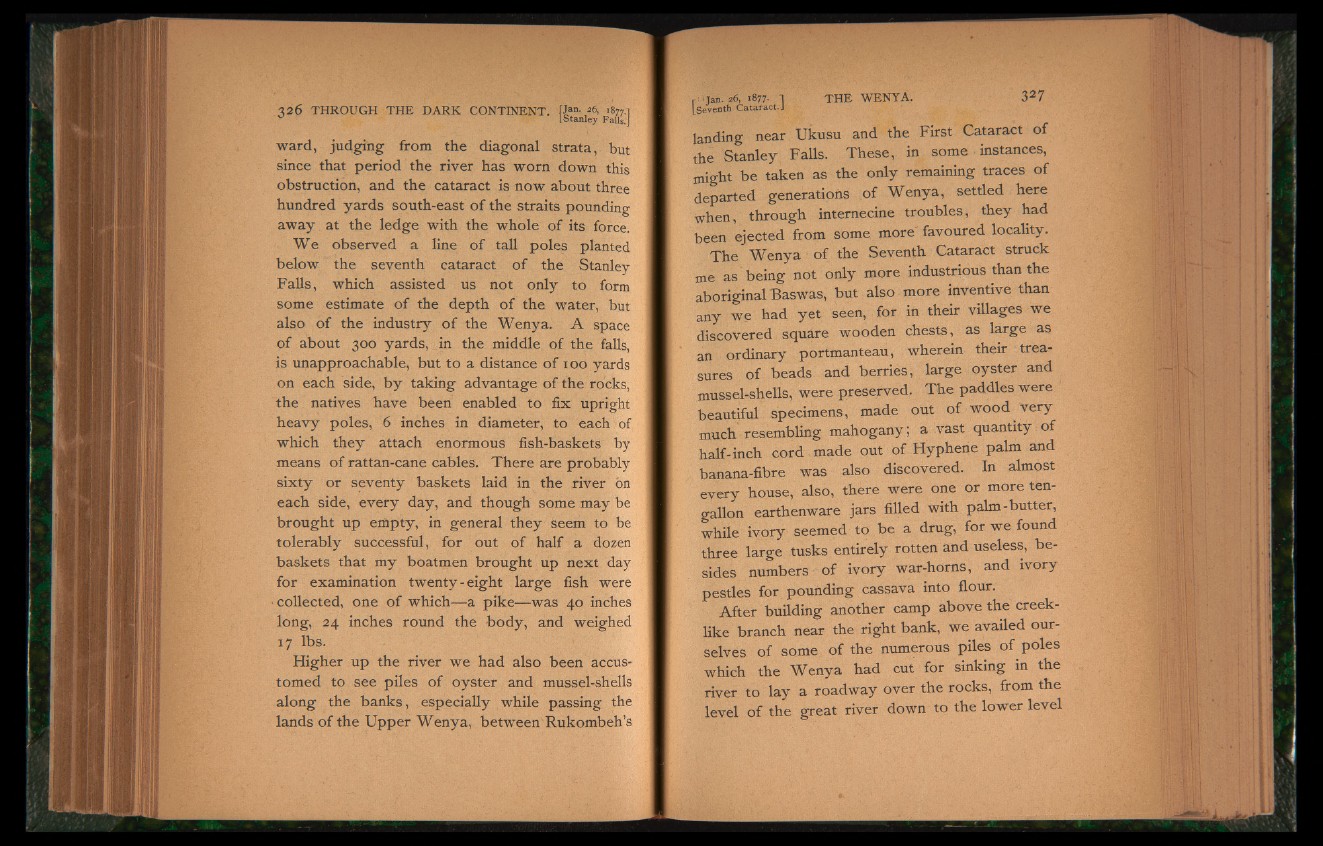
326 THROUGH THE DARK CONTINENT. fJan- 26> 1877.1
** LStanley Falls.]
ward, judging from the diagonal strata, but
since that period the river has worn down this
obstruction, and the cataract is now about three
hundred yards south-east of the straits pounding
away at the ledge with the whole of its force.
We observed a line of tall poles planted
below the seventh cataract of the Stanley
Falls, which assisted us not only to form
some estimate of the depth of the water, but
also of the industry of the Wenya. A space
of about 300 yards, in the middle of the falls,
is unapproachable, but to a distance of 100 yards
on each side, by taking advantage of the rocks,
the natives have been enabled to fix upright
heavy poles, 6 inches in diameter, to each of
which they attach enormous fish-baskets by
means of rattan-cane cables. There are probably
sixty or seventy baskets laid in the river on
each side, every day, and though some may be
brought up empty, in general they seem to be
tolerably successful, for out of half a dozen
baskets that my boatmen brought up next day
for examination twenty-eight large fish were
collected, one of which— a pike— was 40 inches
long, 24 inches round the body, and weighed
17 lbs.
Higher up the river we had also been accustomed
to see piles of oyster and mussel-shells
along the banks, especially while passing the
lands of the Upper Wenya, between Rukombeh’s
r Jan. 26, 1877. I THE WENYA.
[Seventh C a ta r a c t .!
landing near Ukusu and the First Cataract of
the Stanley Falls. These, in some instances,
might be taken as the only remaining traces of
departed generations of Wenya, settled here
when, through internecine troubles * they had
been ejected from some more favoured locality.
The Wenya of the Seventh Cataract struck
me as being not only more industrious than the
aboriginal Baswas, but also more inventive than
any we had yet seen, for in their villages we
discovered square wooden chests, as large as
an ordinary portmanteau, wherein their treasures
of beads and berries, large oyster and
mussel-shells, were preserved. The paddles were
beautiful specimens, made out of wood very
much resembling mahogany; a vast quantity of
half-inch cord made out of Hyphene palm and
banana-fibre was also discovered. In almost
every house, also, there were one or more ten-
gallon earthenware jars filled with palm-butter,
while ivory seemed to be a drug, for we found
three large tusks entirely rotten and useless, besides
numbers of ivory war-horns, and ivory
pestles for pounding cassava into flour.
After building another camp above the creeklike
branch near the right bank, we availed ourselves
of some of the numerous piles of poles
which the Wenya had cut for sinking in the
river to lay a roadway over the rocks, from the
level of the great river down to the lower level